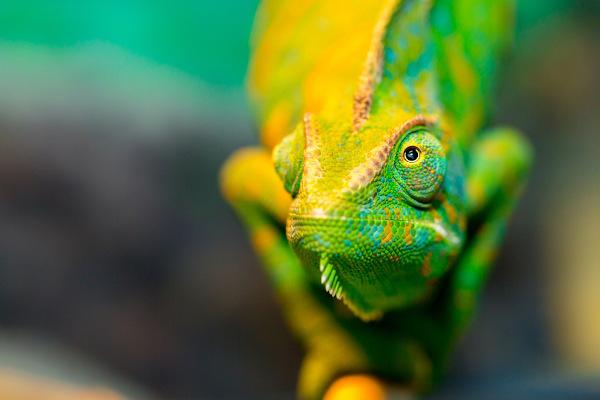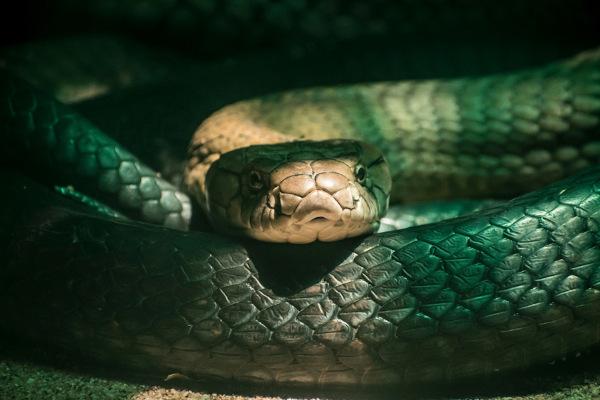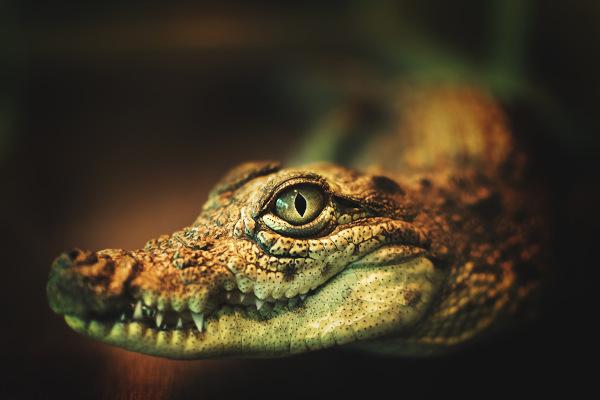Reptile (from Latin, reptar, “crawl”) is a term traditionally used to refer to a group of vertebrate animals tetrapods, amniotes and ectotherms, which includes snakes, lizards, turtles and crocodiles. Currently there are more than 9000 species different reptiles scattered all over the planet (except at the poles).
According to the Brazilian List of Reptiles, published by the Brazilian Society of Herpetology, the Brazil presents today795 species of reptiles, being 36 Testudines, six crocodylia and 753 squamata (72 amphisbeans, 276 “lizards” and 405 snakes). With these numbers, Brazil is considered to have the third largest reptile wealth in the world.
Read more: Brazilian venomous snakes - more than 370 species distributed in 10 families
General characteristics of reptiles
reptiles are tetrapod animals (which have four members) and amniotes (whose embryos are surrounded by the amniotic membrane). They are well adapted to live in the terrestrial environment, featuring thick epidermis with scales and/or osteoderms
(bone deposits), which make them resistant to desiccation, in addition to some representatives putting eggs with shells that protect the embryo and all of them also perform internal fertilization, which prevents gamete desiccation.reptiles are animals ectothermics, that is, they are not able to maintain their body temperature using their metabolism. In order to be able to maintain the proper temperature, they absorb external heat, heating themselves, for example, by exposing themselves to the sun. It is because of these characteristics that reptiles are called pet animals. "cold blood" and are not able to live in the pole region.

O reptile digestive system is complete, starting in the mouth and ending in the cloaca. Eating habits are variable, but most are carnivore. The way to kill their prey is also different between groups. At pythons, for example, kill them by constricting their body, while crocodiles use their powerful jaws. There are also those species that rely on the poison to get their food, this being the case of cobras.
These animals have circulation double, closed and incomplete. The heart is divided into three chambers, the ventricle being partially divided, with the exception of crocodilians, in which the heart is completely divided into four chambers. Although crocodilians have a heart with four cavities, oxygen-rich blood meets carbon-rich blood soon after leaving the heart, in the Panizza's foramen, region of communication between the left and right branches of the aorta.
Do not stop now... There's more after the advertising ;)
THE reptile breathing is pulmonary, even in those species that live in the aquatic environment, such as the sea turtles. present kidneys as organs responsible for excretion, and the main product of nitrogen excretion is the uric acid.
They are animals that present separate sexes, that is, there are males and females. THE fertilization is internal, and most species are oviparous, there are also ovoviviparous and viviparous representatives. The reptile egg has a limestone shell, which protects against dryness in a terrestrial environment, and four extraembryonic membranes: allantoid, chorion, amnion and yolk sac.
Read more:Types of breathing in animals
reptile classification
Reptiles can be divided into four lineages: Testudines (turtles and tortoises), squamata (lizards and snakes), crocodylia (crocodiles and alligators) and Rhynchocephalia (Tuatara).
Testudines

Testudines or turtles are a group of reptiles in which they are included. turtles, tortoises and tortoises. the tortoises are animals freshwater and semi-aquatic. Tortoises, in turn, are terrestrial animals. Turtles are those that live in the marine environment, although the term is also used for freshwater species such as the water tiger.
The most striking feature of this group is the presence of a hull. THE carapace (dorsal portion of the hoof) is formed by the fusion of the spine with the ribs. The ventral part of this hull, called the cravat, it is mainly formed by dermal ossifications and, with the carapace, it forms a rigid bone structure that guarantees the protection of these animals. Another important feature of turtles is the replacement of teeth with a horny beak.
Read too: Hawksbill turtle - lives on coral reefs in shallower waters
squamata

You scaly include the snakes and the lizards and, as the name implies, the body is covered with scales. You lizards are animals that vary a lot in size, with species of about 16 mm (lizard-jaraguá) to species that reach great lengths, as is the case of theKomodo dragon, about 3 m long. They are found in different environments, with representatives living in deserts and even arboreal species.
At snakes as well as lizards also vary in length, being observed constricting snakes of almost 10 meters. They are animals that descend from lizards, and it is possible to observe, in some species, the presence of pelvic bones and vestigial limbs. Despite not having legs, these animals are able to move quickly through the environment through lateral waving movements. If you want to go deeper into this classification, read: squamata.
crocodylia

Youcrocodiliansare reptiles that usually occupy the hottest regions of the planet and that, in general, have high rainfall or shallow rivers, lakes, estuaries and seas. They have an elongated skull, short muscular neck, extremely strong bite and a long tail. are animals that vary in size, existing species that reach almost 8 meters in length.
Read too: Differences between crocodiles and alligators
Rhynchocephalia

Rhynchocephalia is a strain of reptiles that currently has just a representative: the tuatara. These animals are found only in the New Zealand, feed on insects, eggs and small lizards and are about 50 centimeters long.
Ecological and economic importance of reptiles
Reptiles are animals that are part of food chain of different ecosystems. We have species, such as crocodiles and alligators, which are large carnivores, being part of the top of the chain of ecosystems where they are found.
Some species are herbivores and act as primary consumers, this being the case for some lizards. Other species, in turn, take the place of secondary consumers, such as snakes that feed on herbivores. Therefore, the extinction of any of these species as well as your uncontrolled development can jeopardize the balance of the ecosystem.
In addition to being ecologically important, reptiles have economic importance. Some of them serve as food for human beings, such as the alligator. In addition, some species have pharmaceutical potential, as is the case of the common jararaca venom, responsible for the development of a remedy against hypertension called captopril.
By Vanessa Sardinha dos Santos
Biology teacher
